Programmatic SEO: What Is It and How to Do It?
Are you interested in learning more about programmatic SEO but don’t know where to start? If so, you’re in the right place!
When used responsibly, programmatic SEO (sometimes called pSEO) is an excellent way for companies to create thousands of unique and valuable pages for their website. The thing that makes this strategy unique is that each page doesn’t need to be manually written, designed, and published.
Plenty of companies you know and trust use programmatic SEO to scale their business and provide their customers with high-value content.
Today, we are going to break this topic down so you can better understand what programmatic SEO is and how it can help your business.
Let’s dive in!
What is Programmatic SEO?
Put plainly, programmatic SEO is a technique where publishersbrand leaders and marketers can create SEO-optimized pages in bulk by using data they’ve obtained as well as programmed rulesets. The main focus is to use structured data, page templates, and automation to target specific long-tail keywords.
In most cases, this strategy is used by websites that rely on extensive content libraries, like templates and databases.
Programmatic SEO includes the following components:
- Data and keyword research
- Page templates
- Automation tools
- Structured data, like schema markup and metadata
Difference Between Traditional SEO and Programmatic SEO
Below, you’ll find a handy table that shows the basic differences between traditional and programmatic SEO.
| Aspect | Traditional SEO | Programmatic SEO |
| Approach | Each page is optimized manually | Pages are created automatically and at scale |
| Content Scope | Focuses on a smaller, curated set of pages. | Targets large volumes of pages, often in the thousands. |
| Tools and Methods | Relies on human input for analysis and implementation. | Combines data analytics, automation, and templates with human oversight. |
| Use Case | Great for niche, high-value keywords. | Ideal for long-tail, low-competition keywords. |
Benefits of Programmatic SEO
- Scalability — Programmatic SEO helps businesses to create and optimize hundreds—or even thousands—of web pages. Automation and dynamic templates help you scale up your business without a ton of extra manual work. This is helpful for businesses with lots of datasets, such as e-commerce websites or content aggregators, to grow their brand by targeting industry-specific long-tail keywords.
- Efficiency — Programmatic SEO automates the time-consuming, laborious tasks of keyword mapping, metadata creation, and content generation. This little boost in efficiency eases the burden on SEO teams and results in consistency and quality throughout every page.
- Improved SERP Reach — Programmatic SEO’s biggest strength is how it can help you use words and phrases that other competitors often overlook. These niche keywords have a lower search volume but are highly specific and intent-driven, which makes them easier keywords to target. Ultimately, this will help you attract quality traffic and boost your position in the SERPs. When you consider that 68% of all online experiences start with a search engine, it’s easy to see why this is important!
- Enhanced User Experience — Programmatic SEO pages are designed with user-friendly layouts and customized content. All of these different dynamic features, such as localized data, user reviews, or filters, guarantee that people can quickly and easily find what they’re looking for. All this attention to improving the user experience leads to increased engagement, trust, and satisfaction.
Who Should Consider Programmatic SEO?
E-Commerce Websites
Programmatic SEO goes a long way in helping e-commerce sites, especially those with hundreds of products. It will be much easier to target keywords by automating product, category, and subcategory pages while maintaining a cohesive design and structure throughout.
It can also be helpful for SaaS services that have a lot of integrations with other software, especially if the implementation process is almost identical. Below is an example of how this could look.
Not only does it improve visibility, but customers can also easily find what they are looking for, which means they’re more likely to take action.
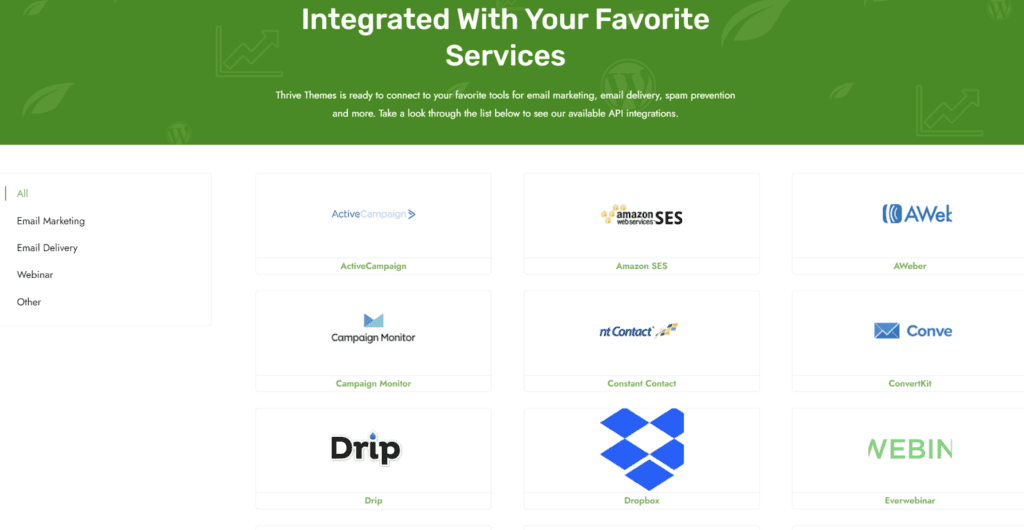
Source: Thrive Themes
Content Aggregators
Websites that collect and display data from multiple sources, such as job boards, real estate platforms, or travel booking sites, are prime candidates for programmatic SEO.
These businesses often rely on databases with large volumes of structured information. With pSEO, they can dynamically generate pages for every job listing, property, or travel package, each optimized for specific user queries, such as “remote software engineering jobs in New York” or “beachfront rentals in California.”
Affiliate and Review Websites
Affiliate and review platforms can use programmatic SEO to scale their content output by creating pages for individual products, services, or comparisons. This makes sense when you consider that 69% of affiliate marketers say they rely on SEO to drive traffic.
For instance, a site focused on tech reviews could generate pages for every combination of product and feature, such as “laptops with the best battery life for students.” This level of detail is excellent for capturing niche traffic that is ready to convert.
Here, these types of posts have two of the top three results:
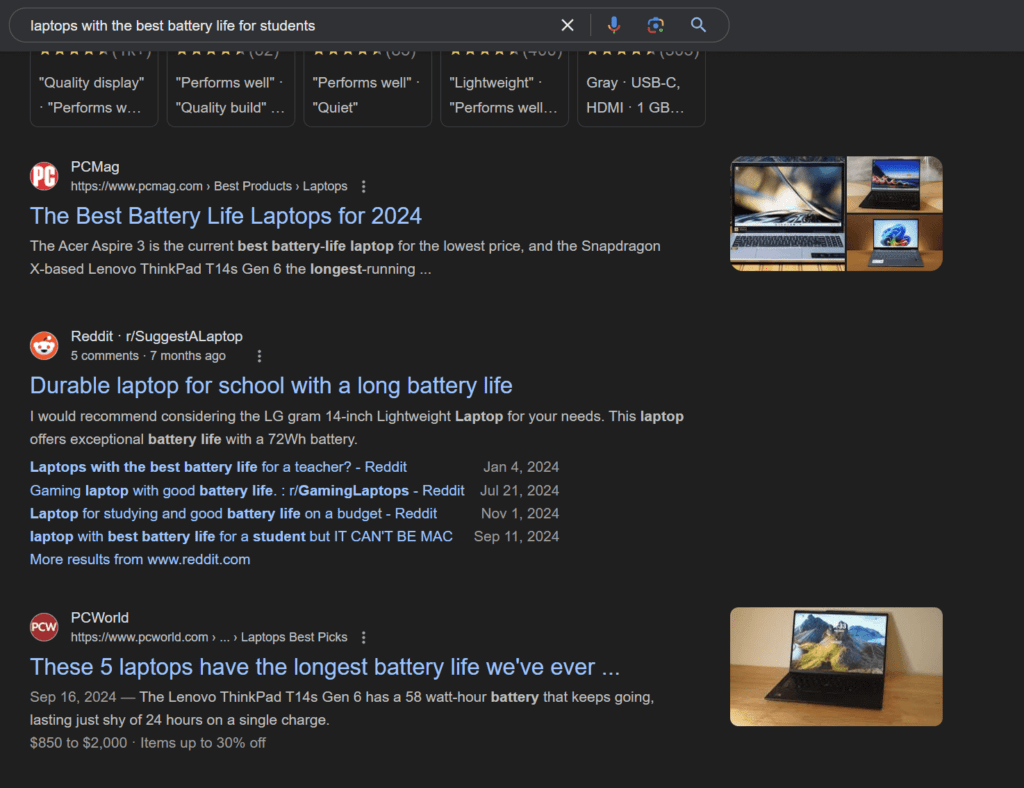
Large-Scale Content Publishers
Media companies and large-scale publishers with extensive archives or ongoing content needs can harness programmatic SEO to boost their reach.
By automating the creation of topic-specific pages or guides, they can address a wider audience and keep their content current. For example, a publisher focusing on travel could create destination-specific pages for “top-rated restaurants in Paris.”
How to Implement Programmatic SEO?
If you want to implement programmatic SEO, you need a systematic approach, so you have a roadmap that will help you figure out where you’re at and how you can improve.
Step 1: Data Collection and Keyword Research
A strong dataset, along with well-researched keywords, is the foundation of programmatic SEO.
With that in mind, the first thing you should do is gather information from your database and APIs. This may include product specs, customer reviews, geo-info, and so on. Generally speaking, you’ll want just about any piece of structured content that is relevant to your audience.
Next, it’s time to do some keyword research. Your main goal should be to identify long-tail keywords that match your audience’s intent. Your chosen words or phrases should have low competition but a medium to high search volume.
Selecting the right keywords is so important because it ensures you’re covering all the words people might be searching for when they’re looking for your site.
Step 2: Establish a Page Template
Page templates are the foundation of programmatic SEO. You’ll want to create templates that are easy to populate with data from your dataset while also following SEO best practices.
Each template should have the following:
- Optimized headings, H1, H2, etc., with keywords.
- Structured data markup (e.g., schema.org) for rich results.
- Meta tags, including descriptive titles and compelling meta descriptions.
- User-centered elements such as images, reviews, or call-to-action buttons.
For instance, an e-commerce website would design a product page template with placeholders for product names, prices, descriptions, and customer ratings. They can then take similar products and plug them into the template for quick and easy page generation.
It’s worth mentioning that your template should be mobile-responsive with fast loading times if you want to provide the best experience possible. For context, over 5.48 billion people own and use their smartphones regularly, so it’s not hard to see why reviewing your templates is so important.
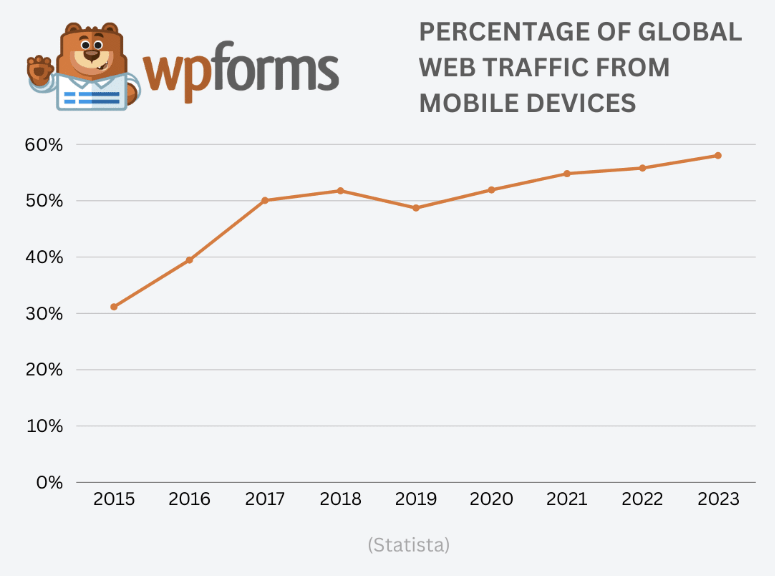
Source: WPForms
Step 3: Automate Content Generation
Next, you’ll want to use data to populate your templates with tools like custom scripts, APIs, or a content management system (CMS).
For instance, Python scripts can be dynamically used in conjunction with structured datasets to populate your predefined templates and create pages.
A travel site can then take that automation and create thousands of pages for individual destinations, each filled with localized attractions, reviews, and recommendations.
But always remember that there needs to be a balance between quality and automation. As much as it makes things faster, the content generated still has to be unique and valuable to your target audience.
Step 4: Optimizing for User Experience (UX)
Speaking of which, when using automation, the user experience probably won’t be flawless. That’s why it’s important to step in and optimize the user experience before you hit publish.
It’s a good idea to keep your templates optimized to the best of your abilities. Some key points worth addressing are:
- Including internal linking to related pages enhances site navigation.
- Optimized code and images to ensure fast load times.
- Interactive elements, such as filters, maps, or user reviews that really make that engagement pop.
- Testing templates on multiple devices for responsiveness.
Here’s a page from G2 that highlights how they are able to optimize their programmatic pages with UX in mind:
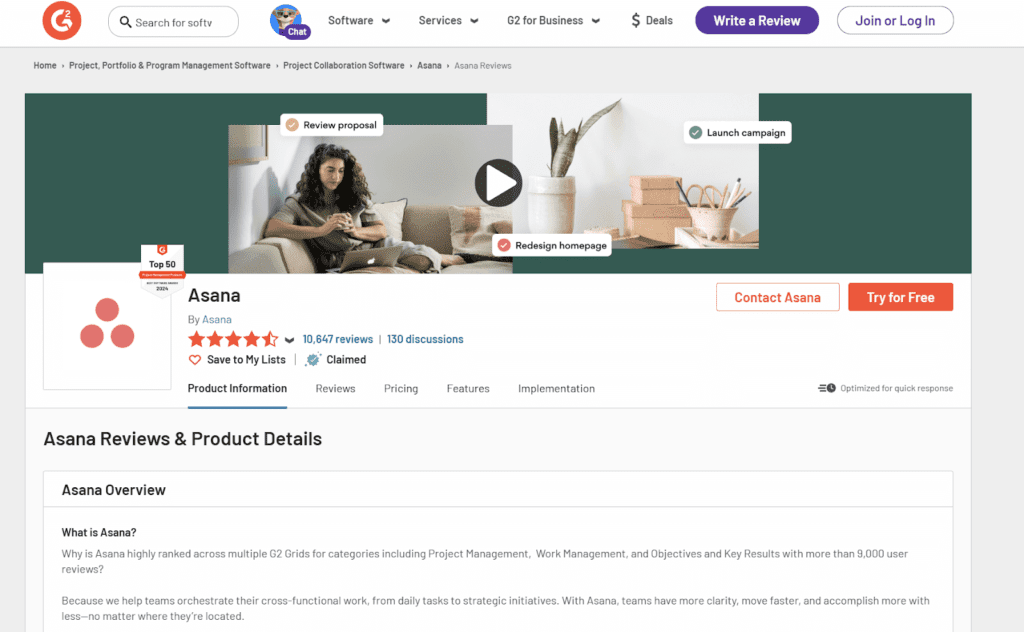
Source: G2
Step 5: Monitor Performance and Make Adjustments
Programmatic SEO is not a one-and-done process. It’s best practice to continue monitoring performance over time with analytics tools like Google Analytics and Google Search Console.
We suggest tracking the following metrics:
- Organic traffic growth.
- Click-through rates (CTR) from search results.
- Bounce rates and time on page.
- The rates at which targeted actions occur, including purchases or form submissions.
Use what you learn to refine your templates and update your content so it’s better for your audience. Make continual adjustments to ensure your strategy remains effective as user behavior and search engine algorithms evolve.
Tools for Programmatic SEO
- Screaming Frog — Screaming Frog is a website crawler that helps identify technical SEO issues such as broken links, duplicate content, and missing metadata. It ensures accuracy and consistency while minimizing the chance of SEO penalties.
- SEMrush — SEMrush is an SEO tool that aids in keyword research, competitor analysis, and tracking page performance. Most people use SEMrush to identify long-tail keywords, monitor rankings for programmatically created pages, and refine their content strategy.
- Python Scripts — Python is a versatile programming language that can automate tasks like metadata creation, structured data integration, and large-scale page generation. Python scripts allow you to dynamically populate templates with data from databases or APIs, which really helps to streamline this process.
- Custom CMS — Custom content management systems (CMS) help with the management of programmatically generated pages. It integrates with data sources, applies SEO-optimized templates, and automates the deployment of large-scale content, which translates to a scalable and flexible workflow.
Integrating Tools Into Your Workflow
For these tools to be effective, you have to use them together and at the right time.
First, use SEMrush for keyword research and finding what matters most to your target audience. If you’re working on your Mac and no longer need Python tools like Anaconda, you might consider learning how to remove Anaconda from Mac to optimize system resources. Once you have a solid keyword map in place, organize your data in an organized manner using Python scripts to clean, structure, and automate the integration of information.
Next, design SEO-optimized templates within your custom CMS, ensuring placeholders for dynamic elements like keywords, descriptions, and structured data. Use the CMS to deploy these templates programmatically, which will help generate a large volume of targeted pages quickly.
Once the pages are live, use Screaming Frog to audit the site for technical issues like broken links or missing tags. Fix any errors found so you can keep your standards high and improve the accessibility of your content for your audience and search engine crawlers.
Put these tools together in a single workflow, and you’ll be able to scale up content production while maintaining quality and improving performance for sustainable success!
Challenges and Limitations of Programmatic SEO
1. Risk of Thin or Duplicate Content
One of the biggest challenges in programmatic SEO is the risk of creating duplicate or otherwise flimsy content. If your templates are too generic, the resulting pages can feel repetitive and not provide the value the people want to see.
Since search engines penalize sites for duplicating content or hosting pages with little useful information, this can hurt overall rankings and auhtority.
To address this, it is essential to incorporate dynamic elements into the templates, such as user reviews, localized content, or detailed descriptions that set each page apart.
Additionally, integrating structured data and adding things like visual content and product-specific FAQs can make each page unique.
2. Crawling and Indexing Issues
The creation of thousands of pages simultaneously can confuse search engine crawlers, resulting in indexing complications.
Often, search engines will favor certain pages over others, especially when the internal linking structures are fragile or when the pages do not exhibit clear signals of relevance.
To solve this, it’s important to apply an internal linking structure to connect pages. Then, with XML sitemaps, crawlers can be guided to those new pages, and their indexing performance can be monitored through tools like Google Search Console. In addition, release programmatically generated pages over time rather than all at once so as not to overwhelm crawlers with too much content.
3. Balancing Automation with Quality
While automation can for sure speed up content production, quality remains a concern. Automation, when relied upon too heavily, may just end up with mistakes, awkward phrasing, or failure to completely correspond with user intent.
Low-quality content fails not only to engage your audience but might also bring about penalties from search engines. To overcome this challenge, integrate manual quality checks into your workflow. Review templates thoroughly before deploying them and regularly audit a sample of live pages to ensure they meet SEO and user experience standards.
For the right balance, it’s very important to combine automation with human oversight.
Best Practices for Successful Programmatic SEO
When implementing programmatic SEO, Success hinges on thoughtful planning, ongoing optimization, and following best practices that balance efficiency with quality.
Below are the key strategies that will help you get started:
Use High-Quality Data
Programmatic SEO starts with high-quality, accurate data. Be it product details, customer reviews, or location-specific information, your data should be clean, structured, and free of duplicates.
High-quality data is crucial for every other step in the process. If your data isn’t great, you’re going to have a difficult time getting value from this strategy.
Focus on Unique and Valuable Content
Do not fall into the trap of creating tons of pages that all look the same, and don’t add anything new to the discussion. Instead, use dynamic elements to make each page unique. This could include some well-placed customer reviews or FAQs.
It’s very important to make sure what you’re publishing is unique and lines up with the search intent of your audience.
You should also consider supplementing pages with more context with visuals, step-by-step instructions, or comparisons to ensure they add real value and guide visitors through your sales funnel.
Prioritize Template Optimization
The design of your page templates plays a pivotal role in both user experience and search engine performance.
Always make sure your optimized templates include:
- Keyword-rich headings (H1, H2, etc.) that align with target search queries.
- Structured data markup for rich snippets.
- Compelling meta descriptions to improve click-through rates.
- Responsive design for mobile and desktop users.
A well-crafted template ensures consistency while allowing flexibility for products based on what they are and who needs them.
Use Internal Linking Strategically
Internal linking is crucial for distributing link equity and guiding users through your site. Programmatically generated pages often benefit from logical interlinking structures that connect related content.
For example, an e-commerce site might link product pages to relevant blog posts where customers can see the product in action. It’s also a good idea to use anchor text that reflects relevant keywords to enhance both user navigation and SEO performance.
Implement Staggered Rollouts
Instead of launching thousands of pages at once, consider a staggered rollout. Gradual deployment allows search engines to crawl and index your pages more effectively, which prevents overwhelming users or search engines and reduces missed opportunities.
It also gives you time to monitor performance, identify issues, and make adjustments before the next batch of pages is released.
Monitor and Optimize
Programmatic SEO is not a set-it-and-forget-it process. Regularly track the performance of your pages so you can be sure you’re getting the most value from each page.
Based on what you learn, refine your templates, update content, and address technical issues as soon as possible. By continuously optimizing, you stand a much better chance of reaching your marketing goals.
Case Studies
One of the last things we want to look at today is a couple of companies that use programmatic SEO to scale their business in new and exciting ways.
Zillow, a leading real estate platform, leverages programmatic SEO to generate pages for millions of property listings and neighborhood profiles. By using structured data and dynamic templates, Zillow ensures that each page is optimized for localized keywords, helping it dominate SERPs for real estate-related searches.
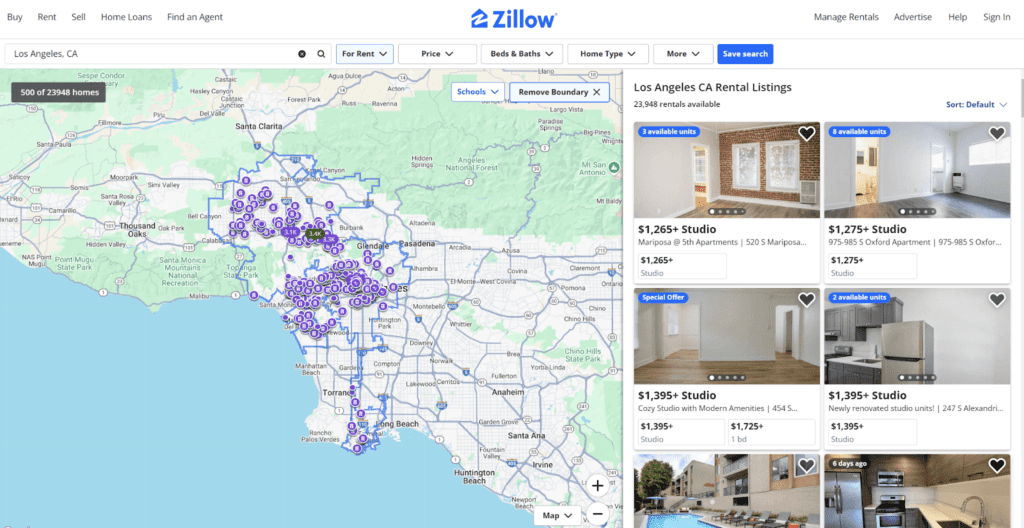
TripAdvisor relies on programmatic SEO to create pages for individual hotels, restaurants, and attractions worldwide. By incorporating user reviews, ratings, and location-specific information, the platform attracts organic traffic for countless long-tail travel queries, making it a top resource for travelers.
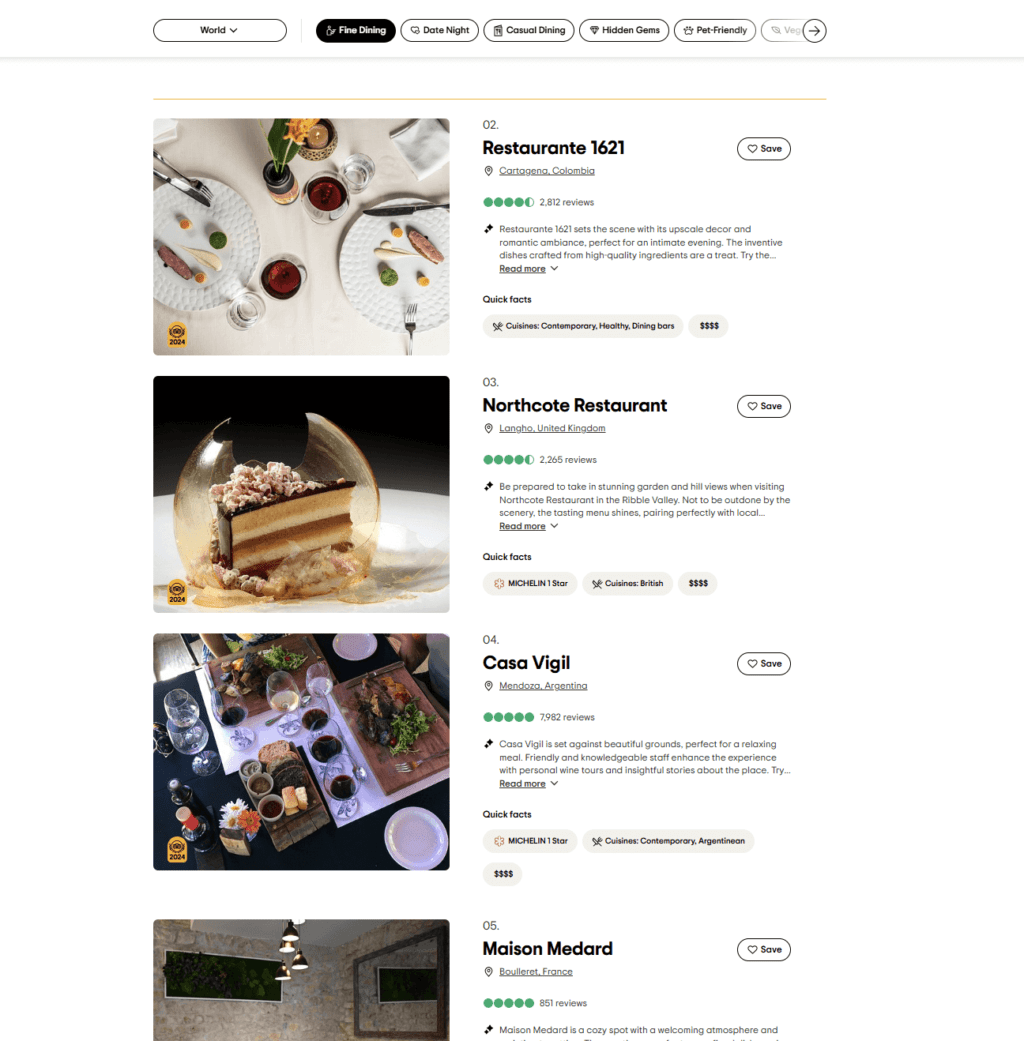
Indeed uses programmatic SEO to power its massive database of job listings. Each listing is dynamically generated with information such as job title, company, location, and salary, allowing Indeed to capture search traffic for highly specific job-related keywords while providing value to job seekers.
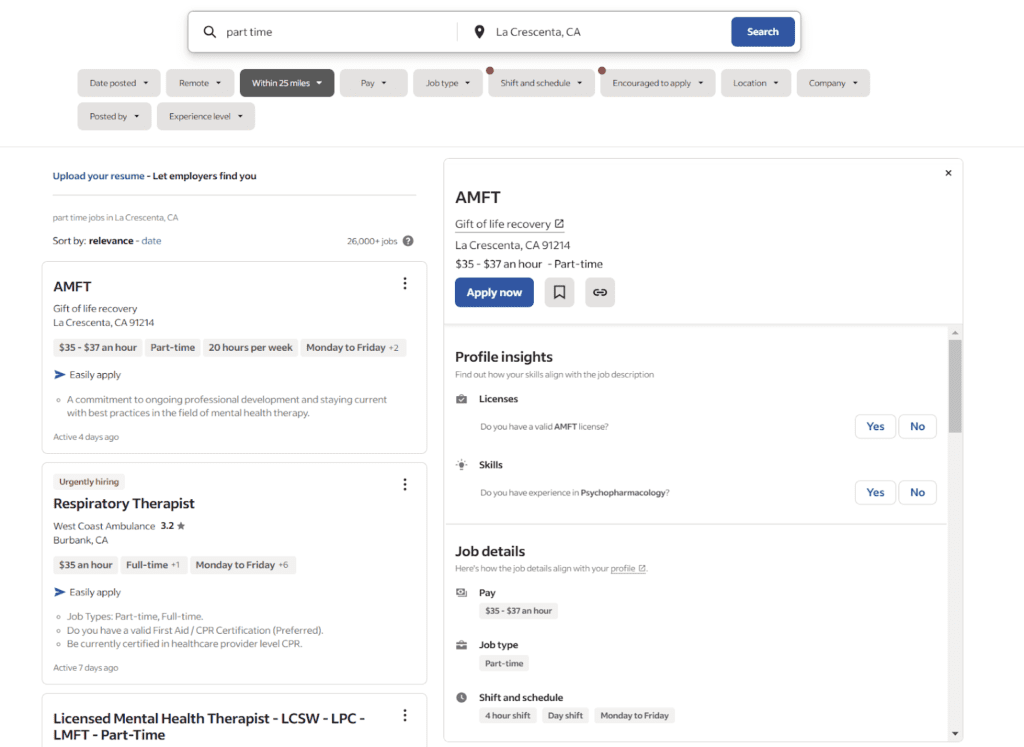
Conclusion
It should be clear by now that programmatic SEO is a complex strategy that can’t be implemented overnight. You also need a little technical know-how and be willing to keep an eye on Google search updates so you can be sure that your pages won’t get marked as spam.
Despite the challenges, it’s entirely possible to use this strategy to scale up your business and reach people who otherwise wouldn’t know you exist. Our final piece of advice is to embrace the strategies discussed today. Spend time researching your audience, design templates that meet your audiences’ needs, and always, always keep an eye on your analytics so you can optimize your pages over time.
Before long, you’ll have a long list of programmatic pages that drive users from around the world to your humble website. The only thing left to do is get started!


